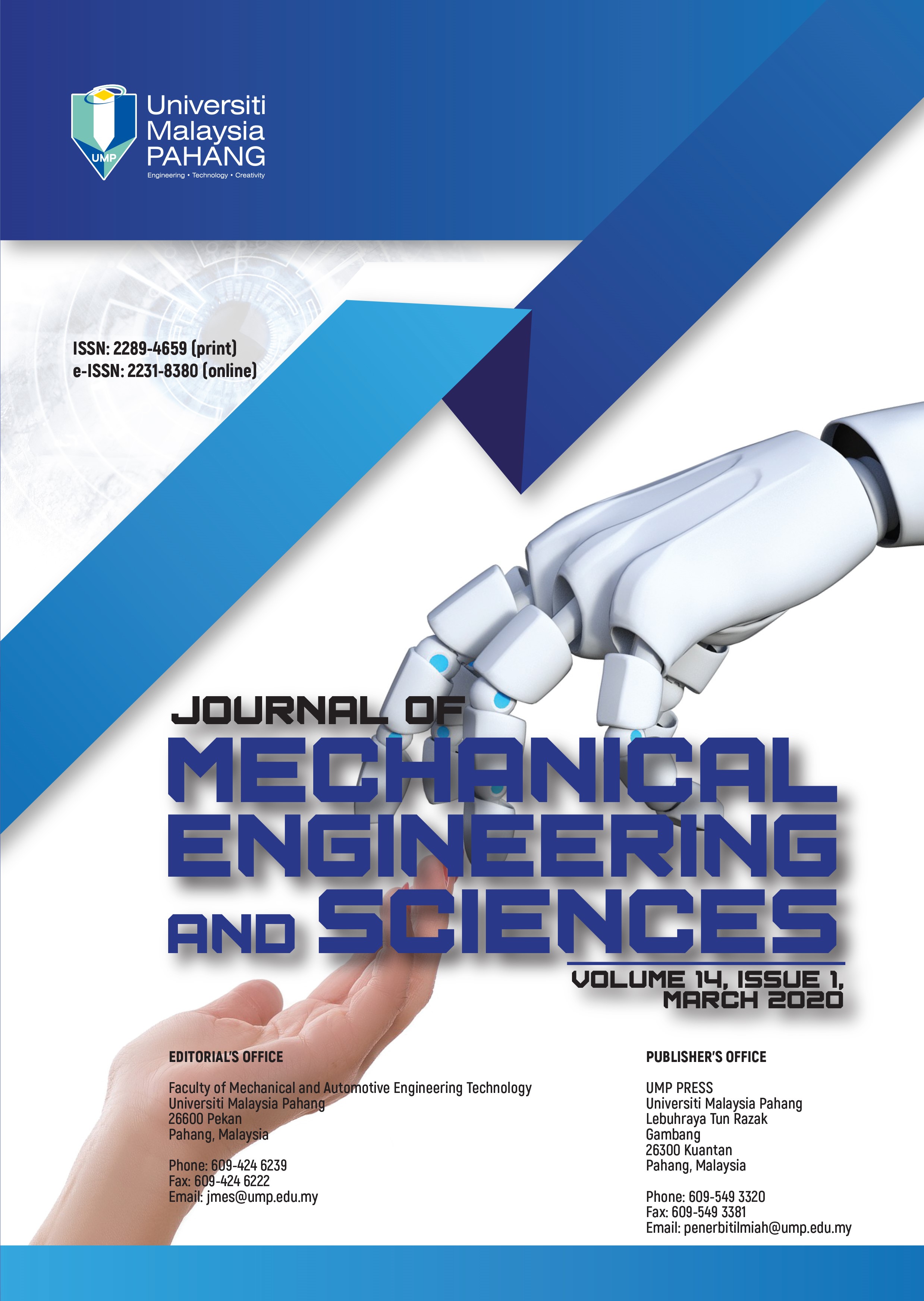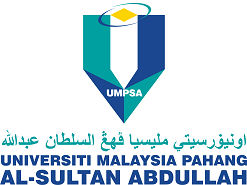Thrombectomy aspiration device geometry optimization for removal of blood clots in cerebral vessels
DOI:
https://doi.org/10.15282/jmes.14.1.2020.02.0487Keywords:
Blood clot removal, Aspiration Thrombectomy Device, Robust Design, StrokeAbstract
A study involving the removal of blood clots in cerebral vessels by aspiration thrombectomy is presented. A robust design for the distal end geometry of a catheter is obtained that, together with adequate suction conditions, could avoid potential damage in the artery or fragmentation the thrombus. The optimization process of the parameters is undertaken by a Design of Experiments (DOE) that has been prepared based on Robust Design theories. In particular, 27 experiments are run for one factor at 9 levels (catheter geometry) and up to 9 factors at 3 levels. The experiments are formulated with virtual models that are solved with computing tools. Co-simulation between Computer Fluid Dynamics (CFD) and Finite Elements Method (FEM) structural analysis was used to obtain the suction conditions and the behavior of the blood clot during the intervention process. By comparing the results of the 27 experiments, the highest values of the suctioning force are obtained for a hole pattern based catheter design, that also gives the lowest risk for clot damage (based on the stress value obtained). Direct aspiration and designs based on conical catheter distal ends, give less robust solutions (results are not stable when the conditions of the environment change). Our study investigated the distance between the catheter and the clot, and it was noted that if the catheter was far from the clot, the suction generated a vessel narrowing and consequent potential damage. Up to 90 kPa could be applied when suctioning at a maximum distance equal to the diameter of the vessel between the distal end of the catheter and the proximal end of the clot. A maximum suctioning force of 0,514N was achieved without damage to the artery or the clot. This research enables us to determine and use the most representative parameters and geometries to be tested in in-vitro and in-vivo experiments. In this virtual study, hypothesizes are assumed with regard to the material properties, but the robustness of the design process allows to expect similar results in future in-vitro and in-vivo tests.
References
Scarborough P et al. Stroke statistics. British Heart Foundation and Stroke Association. Department of Public Health, University of Oxford. 2009:12-13.
Spiotta AM, Chaudry MI, Hui FK, Turner RD, Kellogg RT, Turk AS. Evolution of thrombectomy approaches and devices for acute stroke: A technical review. Journal of Neurointerventional Surgery. 2015;7(1):2–7.
Davis S, Lees K, Donnan G. Treating the acute stroke patient as an emergency: current practices and future opportunities. International Journal of Clinical Practicews. 2006;60(4):399-407.
Hesse AC, Behme D, Kemmling A, Zapf A, Hokamp NG, Frischmuth I et al. Comparing different thrombectomy techniques in five large-volume centers: A ‘real world’ observational study. Journal of NeuroInterventional Surgery 2018; 10(6):525-529.
Gobin YP et al. MERCI 1: A phase 1 study of mechanical embolus removal in cerebral ischemia. Stroke. 2004; 35(12):2848–2854.
Mokin M, Nagesh SVS, Ionita CN, Mocco J, Siddiqui AH. Stent retriever thrombectomy with the Cover accessory device versus proximal protection with a balloon guide catheter: In vitro stroke model comparison. Journal of Neurointerventional Surgery. 2016; 8(4):413–417.
Bose A et al. The penumbra system: A mechanical device for the treatment of acute stroke due to thromboembolism. American Journal of Neuroradiology. 2008; 29(7):1409–1413.
Son S et al. Comparison of Solitaire thrombectomy and Penumbra suction thrombectomy in patients with acute ischemic stroke caused by basilar artery occlusion. Journal of Neurointerventional Surgery. 2014; 8(1):13–18.
Fanous AA, Siddiqui AH. Mechanical thrombectomy: Stent retrievers vs. aspiration catheters. Cor et Vasa. 2016;58(2):193-203.
Lapergue B et al. A direct aspiration, first pass technique (ADAPT) versus stent retrievers for acute stroke therapy: An observational comparative study. American Journal of Neuroradiology 2016; 37(10):1860-1865.
Mokin M, Ionita CN, Nagesh SVS, Rudin S, Levy EI, Siddiqui AH. Primary stentriever versus combined stentriever plus aspiration thrombectomy approaches: In vitro stroke model comparison. Journal of Neurointerventional Surgery. 2015;7(6):453–457.
Bonnette M, Morris D. Thrombectomy catheter system (patent US2014303658A1).
Cosigny P. Spiral thrombectomy catheter (patent US2013060206A1).
Milner K, Barnett A. Thrombectomy catheter with flow directing mechanism (patent US2015133973A1).
Pearce G, Perkinson ND. Biomechanical probe international patent corporate treatise (WO2006120464); European patent (ep1893195 (a2)); Japanese patent (jp2008639924 (t)); Chinese patent (cn101208049 (a)).
Pearce G, Brookfield P, Burley M, Murcott D, Perkinson ND, Spence J, Wong J. The ‘GP’ mechanical thrombectomy device: Measurements and modelling, using laboratory models, applications of geometric algebraic techniques and cadaveric brains. Journal of Stroke and Cerebrovascular Disease. 2009; 18(4) 288-293.
Tennuci C, Pearce G, Wong J, Nayak S, Jones T, Roffe C. Comparison of the effectiveness of three methods of recanalization in a model of the middle cerebral artery: Thrombus aspiration via a 4F catheter, thrombus aspiration via the GP thromboaspiration device and mechanical thrombectomy using the solitaire thrombectomy device. Stroke Research and Treatment. 2011;186424.
Goswami P, Mandal DK, Manna NK, Chakrabarti S. Numerical investigations of various aspects of plaque deposition through constricted artery. Journal of Mechanical Engineering and Sciences. 2019;13(3):5306-5322.
Romero G, Higuera I, Félez J, Pearce G, Perkinson ND. Modelling and simulation of a thrombectomy probe applied to the middle cerebral artery by using the bond graph technique. 9th International Conference on Bond Graph Modeling and Simulation. 2010; 172-179.
Romero G, Martinez ML, Pearce G, Mera JM. An investigation into the performance of a new mechanical thrombectomy device using bond graph modeling: application to the extraction of blood clots in the middle cerebral artery. Simulation. 2013; 89(3):381–391.
Satrio D, Utama IKAP, Mukhtasor. The influence of time step setting on the CFD simulation result of vertical axis tidal current turbine. Journal of Mechanical Engineering and Sciences. 2018;12(1):3399-3409.
Downloads
Published
Issue
Section
License
Copyright (c) 2020 The Author(s)

This work is licensed under a Creative Commons Attribution-NonCommercial 4.0 International License.






